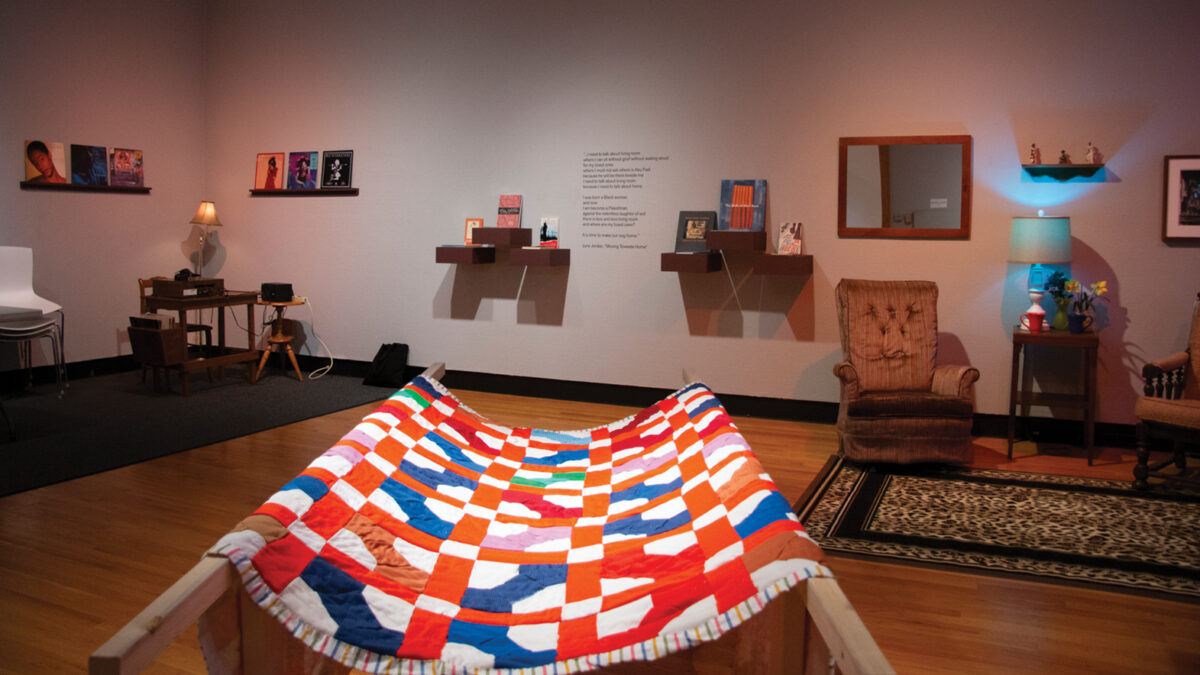
Art is provocative, mind-bending, and whimsical, but without the ability to experience art in person during this pandemic, the challenge becomes finding a piece that resonates beyond the gallery space. Recently, I have developed an overwhelming interest in textile arts. A medium born out of utility has evolved into a vehicle of storytelling which speaks to the longevity and transformative nature of the medium. There is a familiarity in textiles, but also the possibility to imagine different histories and futures. Quilting especially is deeply rooted in the history of Black Americans. Used as a mode of communication on the Underground Railroad, the patterning of these textiles represents more than stitches and thread; it was a way to survive. In contemporary art, textiles have taken a more conceptual approach. Works by Faith Ringgold, Diedrick Brackens, Sanford Biggers, and Bisa Butler brilliantly weave together narratives of Black life. For me, seeing works like these have facilitated a connectedness to Black futures that feel tangible in a world that currently feels so physically disconnected.
During quarantine, I frequently visited Homemade, with Love: More Living Room, an exhibition curated by Blair Ebony Smith at The Krannert Art Museum. Although this was not a show specifically focused on the use of textiles as a means of narrative storytelling, the exhibition was filled with patterned furniture, a quilt draped in the middle of the room, and memorabilia that captured the essence of homemaking for Black girls, women, and femmes. More than anything, the incorporation of textiles in the show resonated with my understanding of the importance of textile arts in the home. Studying art and art history can function as a portal to political ideologies, cultural practices, and creativity. Within my growing interest in textiles, I have been transported into a place of both comfort and possibility.
